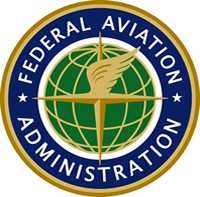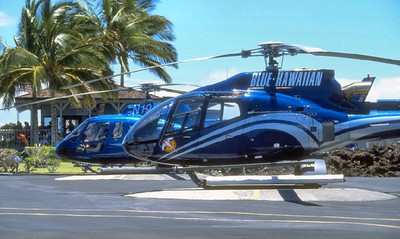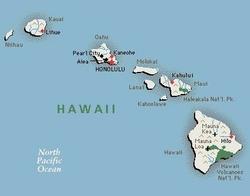Overall Decrease, But More Result In Fatalities, Johns Hopkins
Study Shows
 An emergency rule
intended to reduce the number of deaths and injuries associated
with Hawaiian air tours was followed by a 47 percent reduction in
sightseeing crashes, according to a new study by researchers from
the Johns Hopkins Bloomberg School of Public Health's Center for
Injury Research and Policy.
An emergency rule
intended to reduce the number of deaths and injuries associated
with Hawaiian air tours was followed by a 47 percent reduction in
sightseeing crashes, according to a new study by researchers from
the Johns Hopkins Bloomberg School of Public Health's Center for
Injury Research and Policy.
However, the proportion of crashes that resulted in lives lost
actually increased after the rule change due to an increase in
crashes that resulted from poor visibility, which tend to be
exceptionally fatal. The report is published in the July issue of
Aviation, Space, and Environmental Medicine.
The FAA issued Special Federal Aviation Regulation (SFAR)
71 in 1994 in response to a spate of crashes of helicopter
sightseeing tours that year. The regulation established minimum
flight altitudes and clearances from terrain, emphasized passenger
safety precautions, mandated performance plans prior to each
flight, and required flotation equipment or the wearing of life
preservers on flights beyond the shoreline.
"Our findings indicate that the 1994 Rule was followed by a
reduction of almost half in the crash rate. On the other hand,
crashes that occurred as a result of low visibility-often because
of rain, fog, or clouds-increased from 5 percent to 32 percent of
all air tour helicopter crashes in the 14 years after the new
regulation," said senior author Wren L. Haaland, a 2009 graduate of
Johns Hopkins University who conducted the study as an
undergraduate research assistant with the Bloomberg School's Center
for Injury Research and Policy.

File Photo
"Our data suggest the FAA should reconsider the Rule's clause
that established a minimum flying altitude of 1,500 feet, as we
know higher altitudes are associated with more cloud cover," said
Susan P. Baker, MPH, director of the study's research and professor
with the Injury Center. Clouds obscuring mountain peaks and passes
are particularly common in Hawaii. The Hawaii Helicopter Operators
Association appealed the Rule on the basis that the 1,500-feet
above-ground-level minimum flying altitude would lead to crashes
due to the prevalence of clouds at or above that altitude. The
appeal was rejected by the U.S. Ninth Circuit Court of Appeals.
The researcher team analyzed data collected from the National
Transportation Safety Board's Aviation Accident Database,
identifying 59 crashes of helicopter air tour flights in Hawaii
from 1981 through 2008. Crashes in 1995 to 2008 were compared with
those in 1981 to 1994. The greatest decreases occurred in crashes
into the ocean, crashes not involving malfunctions, and nonfatal
crashes. Aircraft malfunctions were the most common precipitating
factor throughout the study period, occurring at similar
frequencies pre- and post- regulations. The most common malfunction
was loss of power, most often caused by improper maintenance.
Forty-six tourists and 9 pilots died in 16 fatal crashes during the
28-year study period.

"The persistence of mechanical problems and malfunctions is
noteworthy, since they were related to the majority of crashes and
not addressed by the FAA's 1994 Rule," said Dennis F. Shanahan, MD,
MPH, a co-author of the study. "This is an oversight, as many of
these problems could be prevented through better mechanic training,
closer FAA oversight, and increased emphasis from management on
proper and thorough maintenance procedures. Helicopter tourism is
popular in other areas such as Alaska and the Grand Canyon, and
every precaution should be taken to save lives."
 ANN's Daily Aero-Term (11.28.25): Unmanned Aircraft System (UAS)
ANN's Daily Aero-Term (11.28.25): Unmanned Aircraft System (UAS) ANN's Daily Aero-Linx (11.28.25)
ANN's Daily Aero-Linx (11.28.25) Airborne 11.21.25: NTSB on UPS Accident, Shutdown Protections, Enstrom Update
Airborne 11.21.25: NTSB on UPS Accident, Shutdown Protections, Enstrom Update Airborne 11.26.25: Bonanza-Baron Fini, Archer v LA NIMBYs, Gogo Loses$$$
Airborne 11.26.25: Bonanza-Baron Fini, Archer v LA NIMBYs, Gogo Loses$$$ Airborne-NextGen 11.25.25: EHang Manned Flt, Army UAVs, Starship V3 Booster Boom
Airborne-NextGen 11.25.25: EHang Manned Flt, Army UAVs, Starship V3 Booster Boom





